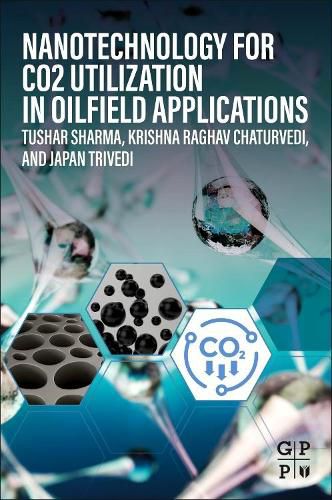Readings Newsletter
Become a Readings Member to make your shopping experience even easier.
Sign in or sign up for free!
You’re not far away from qualifying for FREE standard shipping within Australia
You’ve qualified for FREE standard shipping within Australia
The cart is loading…






Nanotechnology for CO2 Utilization in Oilfield Applications delivers a critical reference for petroleum and reservoir engineers to learn the latest advancements of combining the use of CO2 and nanofluids to lower carbon footprint. Starting with the existing chemical and physical methods employed for synthesizing nanofluids, the reference moves into the scalability and fabrication techniques given for all the various nanofluids currently used in oilfield applications. This is followed by various, relevant characterization techniques. Advancing on, the reference covers nanofluids used in drilling, cementing, and EOR fluids, including their challenges and implementation problems associated with the use of nanofluids.
Finally, the authors discuss the combined application of CO2 and nanofluids, listing challenges and benefits of CO2, such as carbonation capacity of nanofluids via rheological analysis for better CO2 utilization. Supported by visual world maps on CCS sites and case studies across the industry, this book gives today’s engineers a much-needed tool to lower emissions.
$9.00 standard shipping within Australia
FREE standard shipping within Australia for orders over $100.00
Express & International shipping calculated at checkout
Nanotechnology for CO2 Utilization in Oilfield Applications delivers a critical reference for petroleum and reservoir engineers to learn the latest advancements of combining the use of CO2 and nanofluids to lower carbon footprint. Starting with the existing chemical and physical methods employed for synthesizing nanofluids, the reference moves into the scalability and fabrication techniques given for all the various nanofluids currently used in oilfield applications. This is followed by various, relevant characterization techniques. Advancing on, the reference covers nanofluids used in drilling, cementing, and EOR fluids, including their challenges and implementation problems associated with the use of nanofluids.
Finally, the authors discuss the combined application of CO2 and nanofluids, listing challenges and benefits of CO2, such as carbonation capacity of nanofluids via rheological analysis for better CO2 utilization. Supported by visual world maps on CCS sites and case studies across the industry, this book gives today’s engineers a much-needed tool to lower emissions.